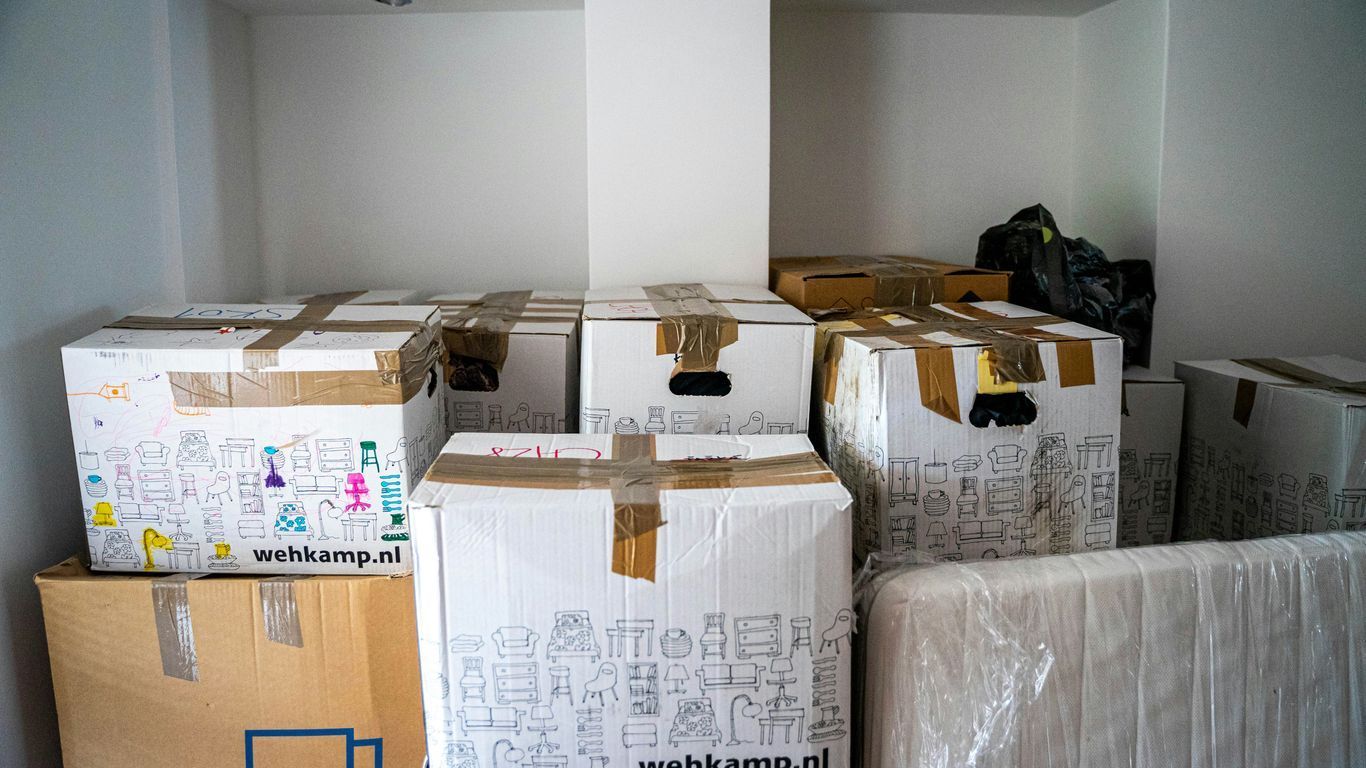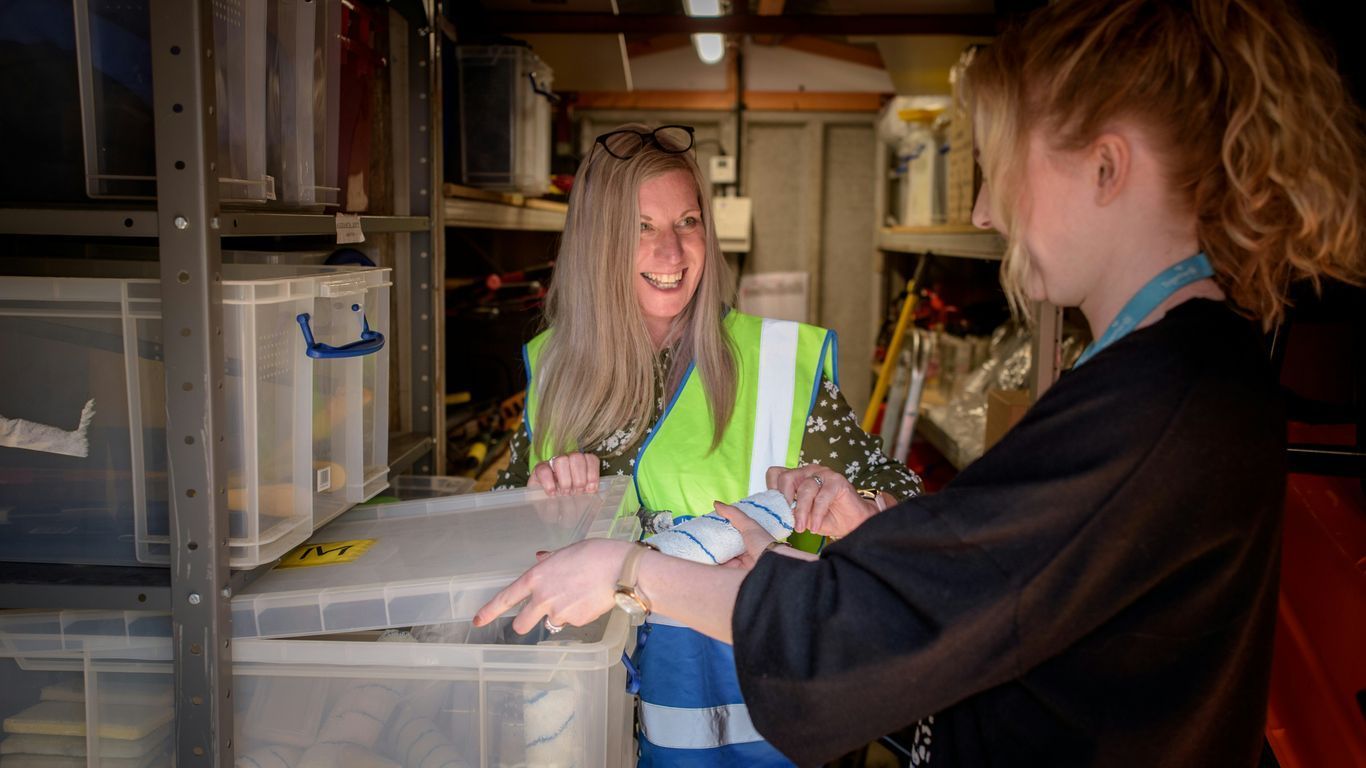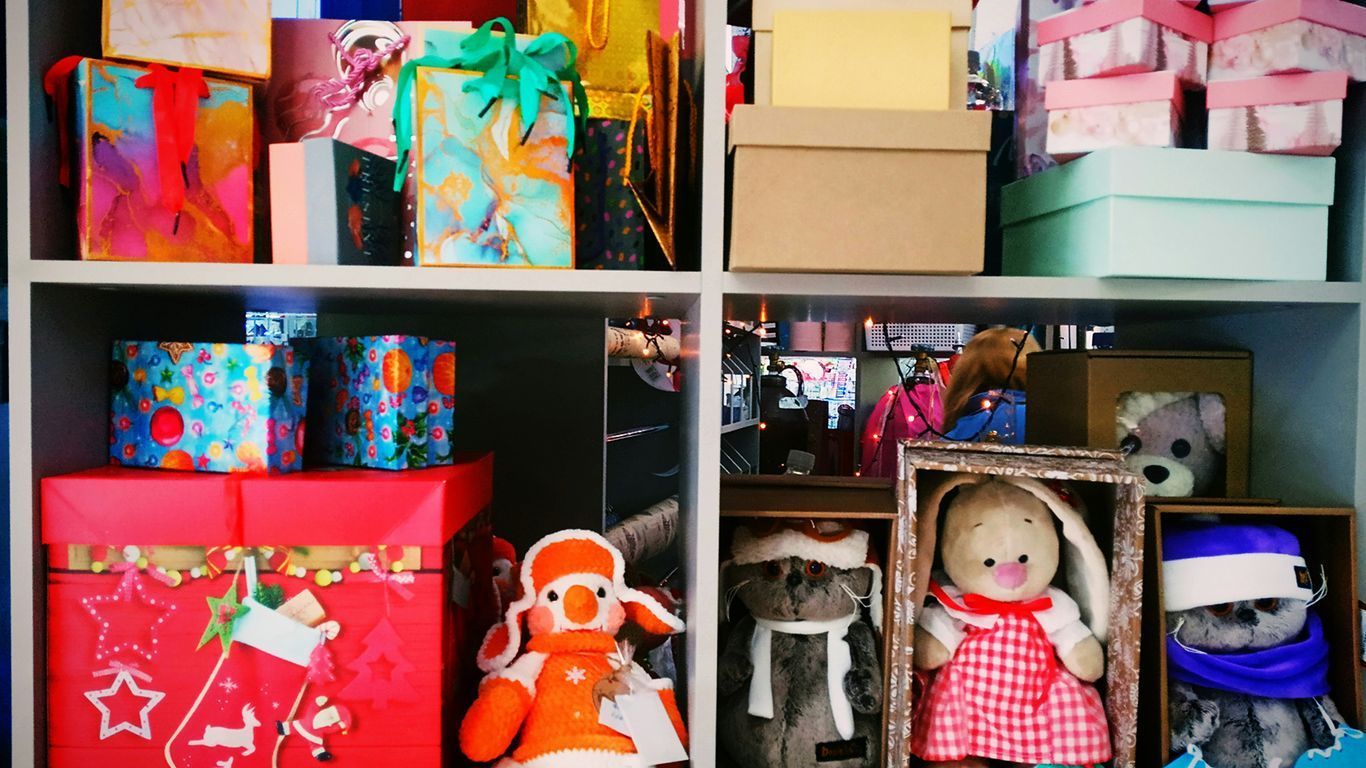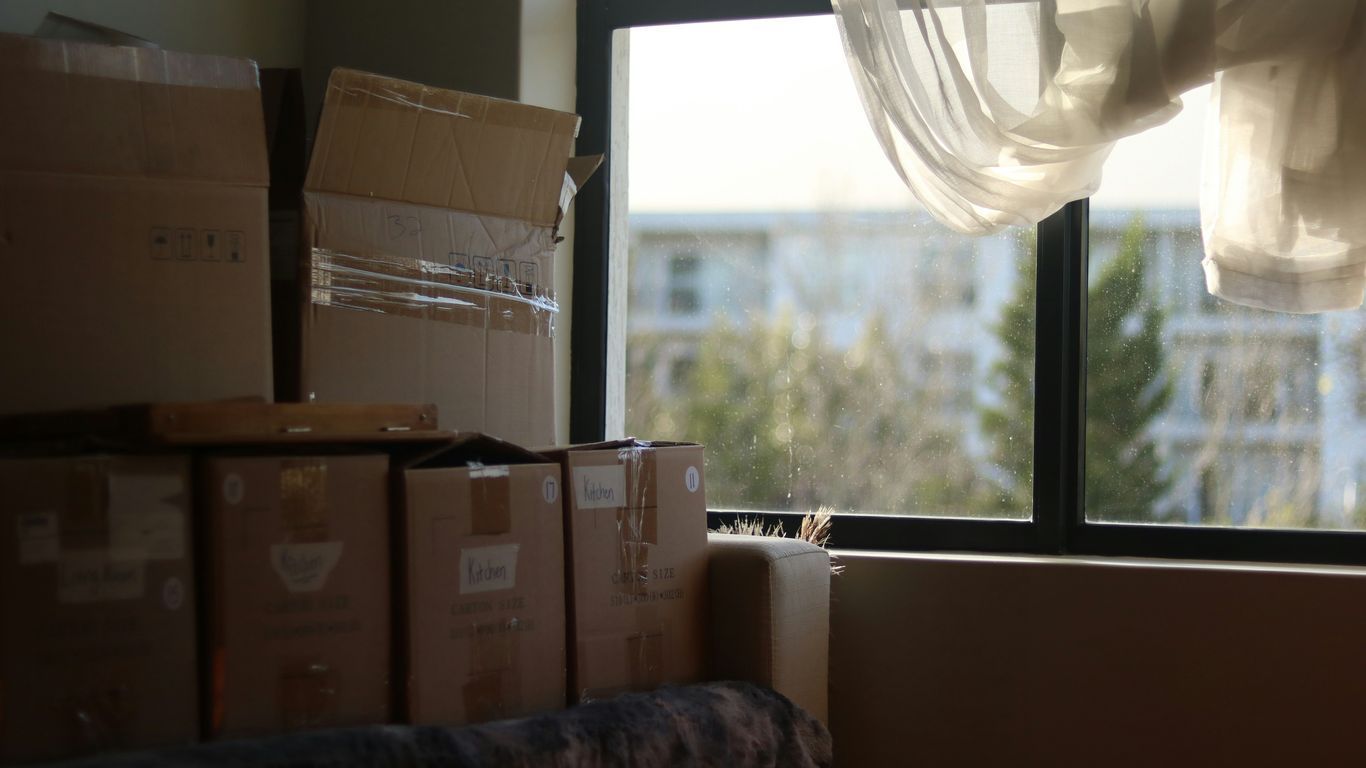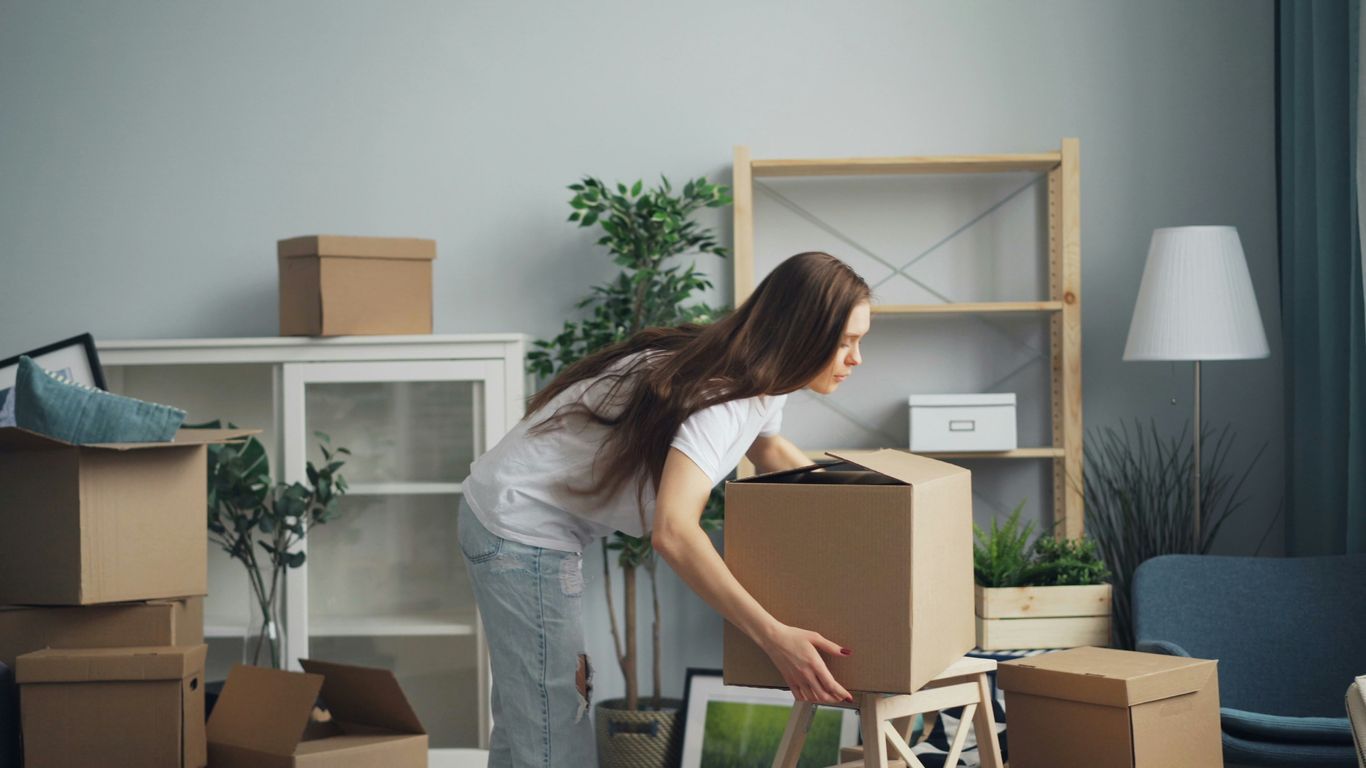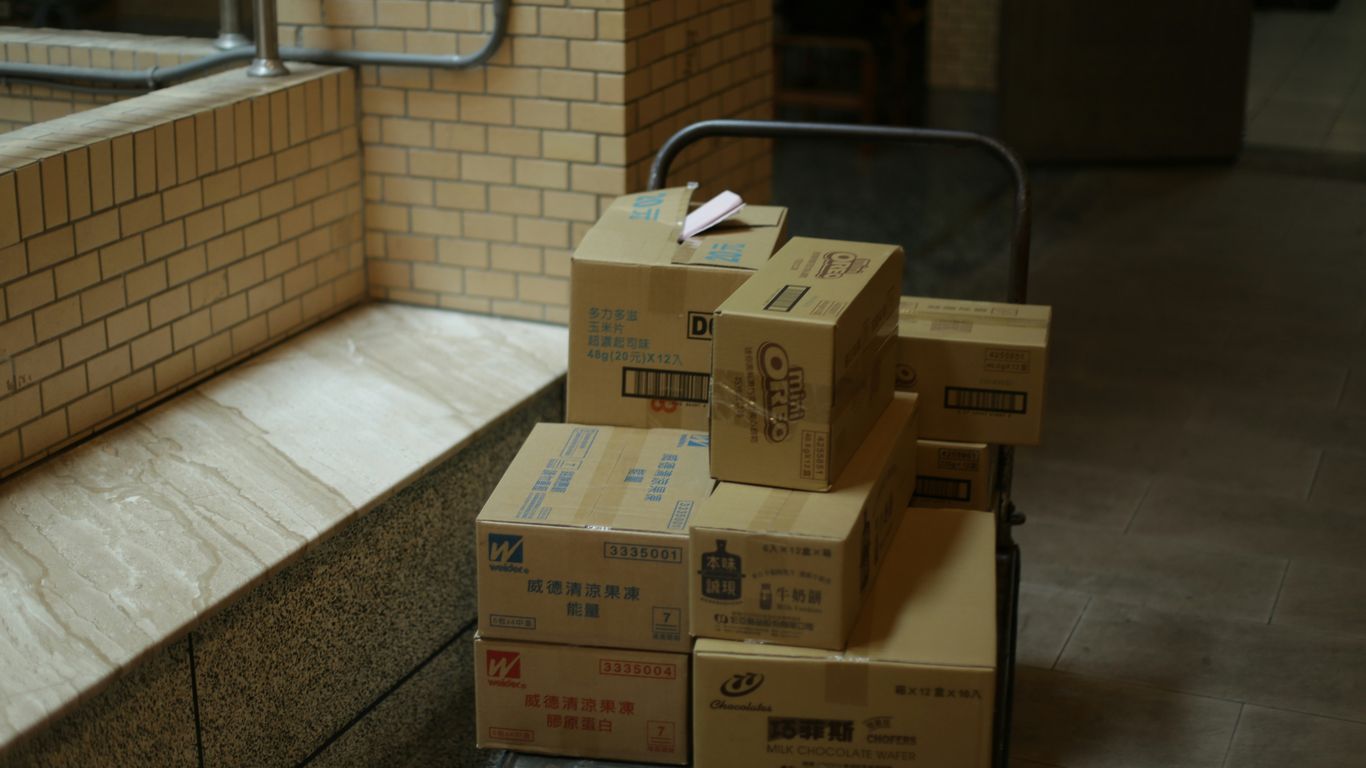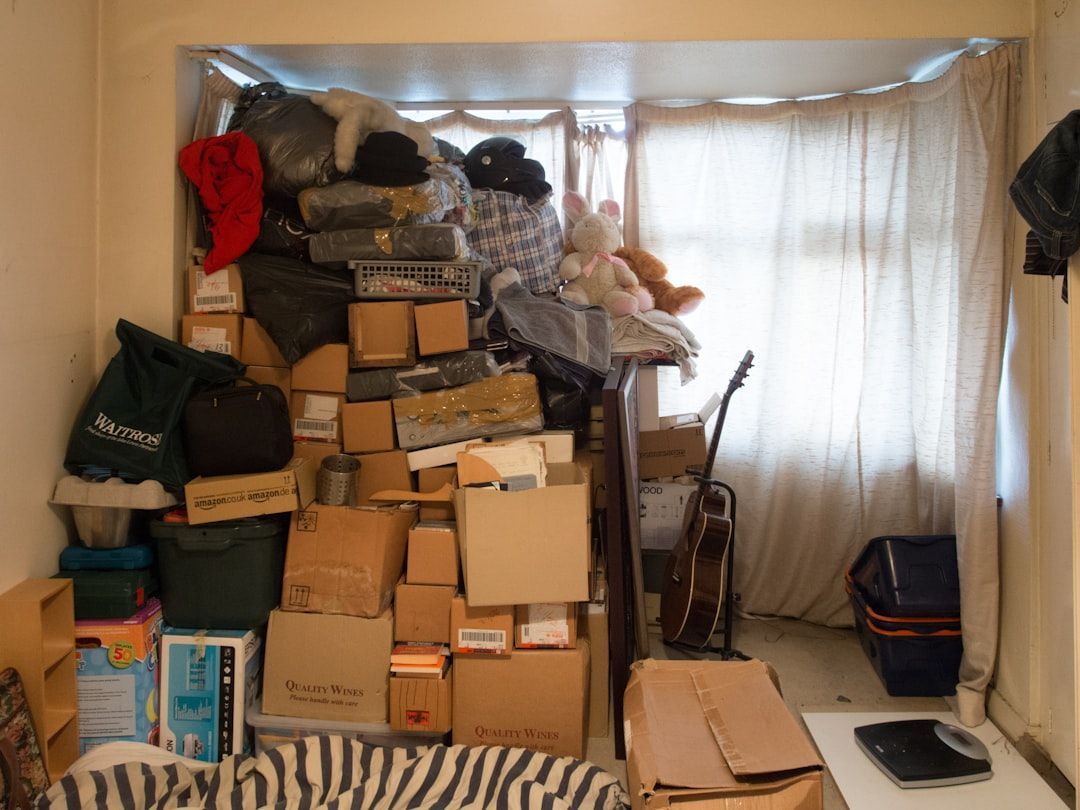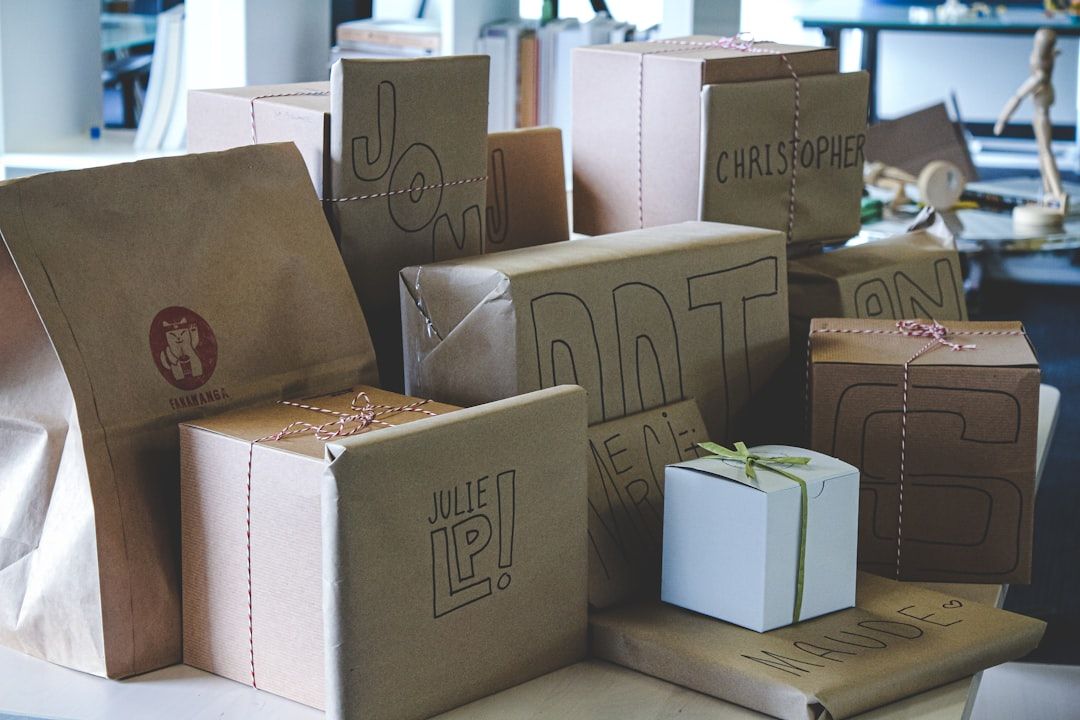The Best Way to Pack a Storage Unit for Long-Term Use
So, you're thinking about putting some stuff in storage for a while? Maybe you're moving, or just need to clear out some space. Whatever the reason, if your things are going to be sitting there for a long time, you can't just throw them in a box and hope for the best. This article will give you some solid long-term storage tips to make sure your belongings stay safe and sound, no matter how long they're tucked away.
Key Takeaways
- Pick the right kind of unit for your stuff, like climate control for delicate items.
- Use good, strong packing materials to protect things from dust and pests.
- Make a clear path inside your unit so you can get to things easily if you need to.
- Clean everything before you store it, and drain any appliances to avoid problems.
- Stack heavy boxes on the bottom and keep valuables hidden from view.
Understanding Long-Term Storage Needs
Defining Long-Term Self Storage
Long-term self storage is more than just stashing stuff away; it's about ensuring your belongings remain safe and sound for extended periods. Think of it as a hibernation for your possessions. Unlike short-term storage, where you might quickly grab holiday decorations, long-term storage demands a strategic approach. It's about packing for durability, considering temperature changes, and protecting against potential pests. Overlooking small details, like storing a slightly damp item, can lead to big problems down the road.
The key difference between short-term and long-term storage isn't the lease agreement, but the preparation. It's about making smart choices to keep your belongings in great shape, no matter how long they're stored.
Benefits of Storage Units for Long-Term Use
While your basement or a friend's place might seem convenient, self-storage units offer distinct advantages for long-term needs.
- Many units are climate-controlled, ideal for sensitive items like electronics and wooden furniture.
- They provide security measures like gated access and surveillance cameras.
- Plus, you can often find special online promotions to get the best deal.
Common Scenarios for Long-Term Storage
Long-term storage isn't just for hoarders; it serves a variety of practical purposes. Here are a few common scenarios:
- Downsizing: If you're moving to a smaller space but not ready to part with cherished items, storage offers a middle ground.
- Home Renovation: Protect your furniture and belongings from dust and damage during an extended remodel.
- Military Deployment: A secure solution for safeguarding your belongings during long-term deployments.
- Managing an Estate: Provides a respectful and secure place to keep belongings while sorting through a loved one's estate.
Selecting the Optimal Storage Unit
Choosing the Right Storage Unit Type
Not all storage units are created equal, and picking the right one can really impact how well your stuff is protected. What you're storing, how often you need to get to it, and the level of protection your items need all play a role.
- Climate-controlled units climate-controlled units are great for things that can be damaged by temperature and humidity, like wooden furniture, electronics, photos, clothes, and important papers. These units keep the temperature and humidity steady all year round, which helps stop warping, cracking, mold, and mildew. If you're storing stuff for months, especially through different seasons, climate control is often worth the extra cost.
- Drive-up units are super convenient. You can park your car right at the door, making it easy to load and unload big things like appliances, outdoor gear, or heavy furniture. They don't have climate control, but they're good for sturdy items that can handle changing conditions, or if you need to get in and out often.
- Storage lockers are smaller, usually chest-high spaces that are perfect for storing smaller loads long-term. Think seasonal decorations, luggage, and small kitchen appliances. If you're storing small stuff and want to save money, lockers give you just enough space without paying for extra you don't need.
Choosing the right type of storage unit is important. Consider what you're storing and how often you'll need access to it. This will help you determine if you need climate control or a drive-up unit.
Finding the Right Unit Size
Besides the type of unit, you'll also want to think about the size and layout. A unit that's a bit bigger than you think you need gives you room to move around and make walkways, which is really helpful if you need to get into the unit now and then. Shelves and clear labels can also help you find things easily, no matter how long they're stored. Start by making a list of everything you plan to store, including furniture, boxes, appliances, and odd-shaped items like bikes or instruments. Then, use that list to figure out how much space you'll need. Small units (5’x5’ to 5’x10’) are good for small furniture, boxes, seasonal items, and small appliances. Medium units (5’x15’ to 10’x15’) can hold the contents of a one- or two-bedroom apartment. Large units (10’x20’ and up) are for the contents of a multi-bedroom house. They can fit big furniture, appliances, vehicles, and lots of boxes. These are like a standard one-car garage. If you think you might add more stuff later, get a bigger unit to start with. If you can, visit the storage place and look at the units in person to get a better idea of the space and how your stuff will fit. Don't forget to check out a detailed list to help you decide.
Considering Climate Control for Protection
Climate control is a big deal for long-term storage. It keeps the temperature and humidity steady, which can prevent a lot of damage. Things like electronics, wooden furniture, and important documents can be ruined by extreme temperatures or moisture. Climate-controlled units keep these things safe. If you're storing anything valuable or sensitive, it's worth the extra cost. Even if you're not storing anything super delicate, climate control can help prevent mold and mildew, which can damage almost anything. Think about the local climate where the storage unit is located. If it's humid or has extreme temperature swings, climate control is even more important.
- Protecting sensitive items.
- Preventing mold and mildew.
- Maintaining consistent conditions.
Strategic Packing for Longevity
Choosing the Right Packing Materials
Selecting the correct packing materials is essential for long-term storage. It's more than just tossing things in a box; it's about protecting your items for an extended period.
- Invest in sturdy, high-quality boxes. Uniform sizes make stacking easier and safer.
- Use plenty of packing paper, bubble wrap, or foam sheets to cushion fragile items.
- Consider plastic bins with tight-fitting lids for added protection against moisture and pests. These are especially good for clothing and linens.
Don't skimp on packing materials. Cheap boxes can collapse, and insufficient padding can lead to damage. Think of it as an investment in the long-term preservation of your belongings.
Protecting Fragile Items
Fragile items need extra care when packing for long-term storage. It's not enough to just wrap them once and hope for the best.
- Wrap each item individually with multiple layers of bubble wrap or packing paper.
- Use dividers within boxes to keep items from bumping into each other.
- Clearly label boxes containing fragile items to prevent mishandling.
Disassembling Furniture for Space and Safety
Disassembling furniture can save space and prevent damage during long-term storage. It might seem like a hassle, but it's worth the effort.
- Remove legs from tables and sofas.
- Take apart bed frames and headboards.
- Keep all screws, bolts, and hardware in labeled bags and attach them to the corresponding furniture piece. This will save you a headache when you're ready to reassemble everything.
- Wrap furniture pieces in protective blankets or plastic wrap to prevent scratches and dust accumulation. This is especially important for wooden furniture, which can be susceptible to moisture damage.
Organizing Your Unit for Accessibility
Creating a Walking Path
When you're setting up your storage unit, think about how you'll move around inside it. The best way to do this is to create a clear path, especially if you plan on visiting the unit often. A central aisle is a great start, and for bigger units, consider adding more paths so you can easily reach everything. This makes finding what you need way less of a headache. Think of it like planning the layout of a mini-warehouse, but for your stuff. This is especially important if you plan to organize and create walkways to access items periodically.
Making Items Easily Accessible
It's smart to put things you might need sooner rather than later near the front. No point in burying your holiday decorations behind a bunch of furniture you won't touch for years, right? Accessibility is key here.
Here's a few ideas:
- Keep a list of what's in each box, and tape it to the outside.
- Use clear plastic bins so you can see what's inside without opening them.
- Store frequently used items near the entrance.
Utilizing Space Efficiently
Don't let any space go to waste! Think about how you can maximize every inch.
- Store smaller items inside larger appliances or furniture.
- Stand mattresses and mirrors upright to save floor space.
- Use shelving units to stack boxes vertically.
Think about how you can use the vertical space in your unit. Shelving is your best friend here. It lets you stack boxes safely and keeps things off the floor, which is super helpful for preventing moisture damage. Plus, you can easily see what's on each shelf without having to move a bunch of stuff around.
Protecting Belongings from Environmental Factors
Ensuring Good Air Circulation
It's easy to think sealing everything in plastic is the best way to go, but it can actually cause problems. Plastic can trap moisture, leading to mold and mildew, especially on things like mattresses and furniture. Instead, use breathable covers made of cotton or linen. These let air circulate, preventing moisture buildup. Also, don't cram everything in super tight. Leave some space around larger items to help air flow freely. This is especially important in areas with high humidity.
Preventing Moisture Damage
Moisture is a storage unit's worst enemy. It can cause rust, mold, and all sorts of other damage. Here are a few ways to fight back:
- Use desiccants like silica gel packs in boxes, especially those containing electronics, metal items, or anything else sensitive to moisture.
- Consider placing your items on pallets or shelves. This gets them off the floor, so if there's any flooding, they're less likely to get wet.
- Check your unit regularly for signs of leaks or dampness. If you spot something, address it immediately.
It's a good idea to line the floor of your storage unit with plastic sheeting or tarps. This creates an extra barrier against moisture rising from the ground. Just make sure the sheeting doesn't trap moisture underneath it.
Safeguarding Against Pests
Pests can wreak havoc on your stored belongings. Mice, moths, and other critters can chew through fabrics, damage furniture, and generally make a mess. Here's how to keep them out:
- Don't store food in your unit. Even a few crumbs can attract pests.
- Seal all boxes tightly with packing tape. This makes it harder for pests to get inside.
- Consider using pest control products like mothballs or rodent traps. Just be sure to follow the instructions carefully and keep them away from children and pets.
- Regularly inspect your unit for signs of pests, such as droppings or chewed boxes.
Smart Loading and Stacking Techniques
Stacking Heavier Items at the Bottom
When loading your storage unit, think of it like building a sturdy foundation. Always place the heaviest boxes and items at the bottom of the stack. This prevents lighter, more fragile items from being crushed under the weight. It's not just about protecting your belongings; it's also about safety. A toppled stack can cause serious injury. Distribute the weight evenly to maintain balance and stability. This is especially important if you're storing things for a long time, as the constant pressure can cause damage over time. Think about items like books, appliances, or heavy furniture – these should form the base of your storage pyramid. This is a key part of strategic arrangement.
Avoiding Over-Stacking
It's tempting to maximize every inch of your storage unit, but over-stacking is a recipe for disaster. Not only does it increase the risk of items falling and getting damaged, but it also makes it difficult to access your belongings later on. Keep stacks at a manageable height, leaving some space between the top of the stack and the ceiling. This allows for air circulation and prevents items from getting compressed. Consider using shelving units to create more vertical space without over-stacking. Remember, accessibility is key, and you don't want to have to dismantle a precarious tower just to find one box.
Placing Valuables Out of Sight
While a storage unit provides a secure space, it's always wise to take extra precautions, especially when storing valuable items. Keep valuables towards the back of the unit, hidden from view. This deters potential theft and provides an added layer of security. Don't advertise what you're storing. Use generic boxes and avoid labeling them with specific contents, especially if those contents are expensive. Consider these points:
- Keep a detailed inventory of your valuables.
- Take photos or videos of your items for insurance purposes.
- Ensure your insurance policy covers your belongings in storage.
Think of your storage unit as a personal vault. The more discreet you are about what's inside, the better. It's about peace of mind, knowing that your valuables are protected and out of sight. This simple step can make a big difference in the long run.
Preparing Items Before Storage
Cleaning and Maintaining Belongings
Before you even think about putting anything into a storage unit, give it a good once-over. This is especially important for long-term storage, as dirt and grime can attract pests and cause damage over time. Wipe down furniture, wash clothes, and dust off electronics. A little elbow grease now can save you a lot of headaches later. It's also a good idea to check for any existing damage so you know what you're starting with.
Draining Appliances and Equipment
Appliances and equipment need special attention. Any liquids left inside can cause corrosion, mold, or other problems. Make sure to:
- Drain all water from washing machines and dishwashers.
- Defrost refrigerators and freezers completely, and let them dry out.
- Empty gasoline from lawnmowers and other gas-powered equipment. Consider adding a fuel stabilizer if you can't completely empty the tank.
- Remove batteries from electronics to prevent corrosion. Properly dispose of batteries to avoid environmental hazards.
Taking these steps will help prevent damage and extend the life of your appliances and equipment. It might seem like a hassle now, but it's worth it in the long run.
Labeling Boxes Clearly
This might seem obvious, but it's amazing how many people skip this step. Label every box with a clear description of its contents. Be specific! Instead of just writing "Kitchen Stuff," try "Kitchen - Plates, Bowls, Mugs." Also, mark boxes containing fragile items clearly. Consider:
- Using a permanent marker that won't fade over time.
- Numbering the boxes and keeping a master list of contents.
- Color-coding boxes by room or category.
- Writing on multiple sides of the box so you can easily see the label no matter how it's stacked.
Before you put things away for a long time, it's super important to get them ready. This means cleaning them up and making sure they won't get messed up while they're stored. Taking a little time now can save you a lot of trouble later. Want to learn more easy tips for keeping your stuff safe? Head over to our website for all the details!
Wrapping Things Up
So, there you have it. Getting your stuff ready for long-term storage might seem like a big job, but it's really about being smart and thinking ahead. If you pick the right unit, use good packing stuff, and organize things well, your belongings will be safe and sound for a long time. It's all about making sure your items are protected from dust, bugs, and even just the passage of time. A little effort now means you won't have any nasty surprises later. Happy storing!
Frequently Asked Questions
What does 'long-term self storage' mean?
Long-term storage is when you keep your things in a storage unit for several months or even years. It's different from short-term storage because you need to pack your items very carefully to protect them from things like changing temperatures, moisture, and bugs over a long period. This means using good quality packing materials and making sure everything is sealed well.
Are storage units good for long-term use?
Yes, storage units are a great choice for long-term use. Many units have climate control, which means they keep the temperature and humidity steady. This is super important for delicate items like wooden furniture, electronics, photos, and clothes, as it stops them from getting damaged or moldy. They also offer a safe and secure place for your belongings.
How do I pick the right size storage unit for long-term use?
The best size depends on how much stuff you have. Storage units come in many sizes, from small lockers for a few boxes to large ones that can hold furniture and even a car. It's a good idea to think about everything you plan to store, and if you might add more things later, choose a slightly bigger unit. Visiting the storage place to see the units can also help you decide.
Is climate control important for long-term storage?
Climate control is very important for long-term storage, especially for items that can be damaged by heat, cold, or humidity. This includes things like wood, leather, electronics, artwork, and paper. Climate-controlled units keep the air steady, which helps prevent warping, cracking, mold, and mildew. If you're storing sensitive items for a long time, it's usually worth the extra cost.
What kind of packing materials should I use for long-term storage?
You should use strong, new boxes and good packing materials like bubble wrap or foam. Don't use plastic sheets on furniture or mattresses, as they can trap moisture and cause mold; instead, use breathable covers. For valuable items, consider using airtight, waterproof containers. Always label your boxes clearly with what's inside.
What are some good tips for packing and organizing my unit for long-term storage?
To keep your items safe, make sure to clean and dry everything before storing it. Take apart big furniture to save space and prevent damage. Wrap fragile items well and fill any empty spaces in boxes. When loading, put heavier boxes on the bottom and lighter ones on top. Leave a path so you can walk through the unit, and place items you might need sooner closer to the front. Also, consider placing valuable items out of plain sight.

